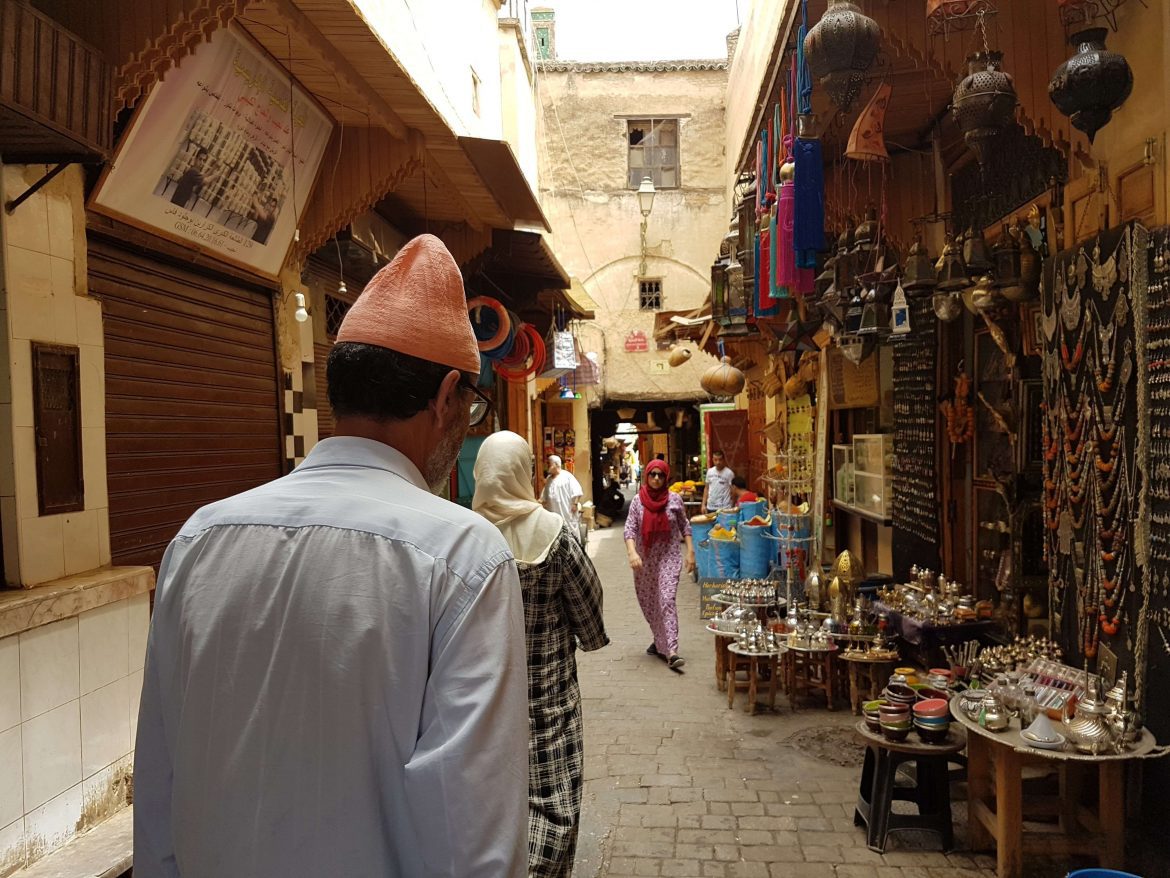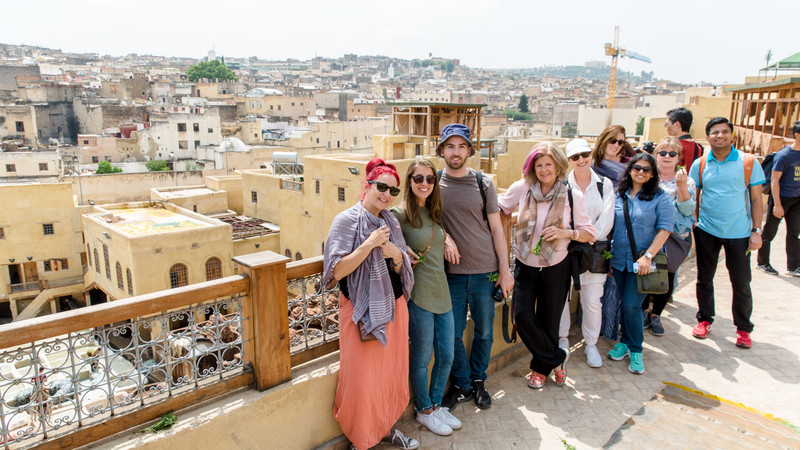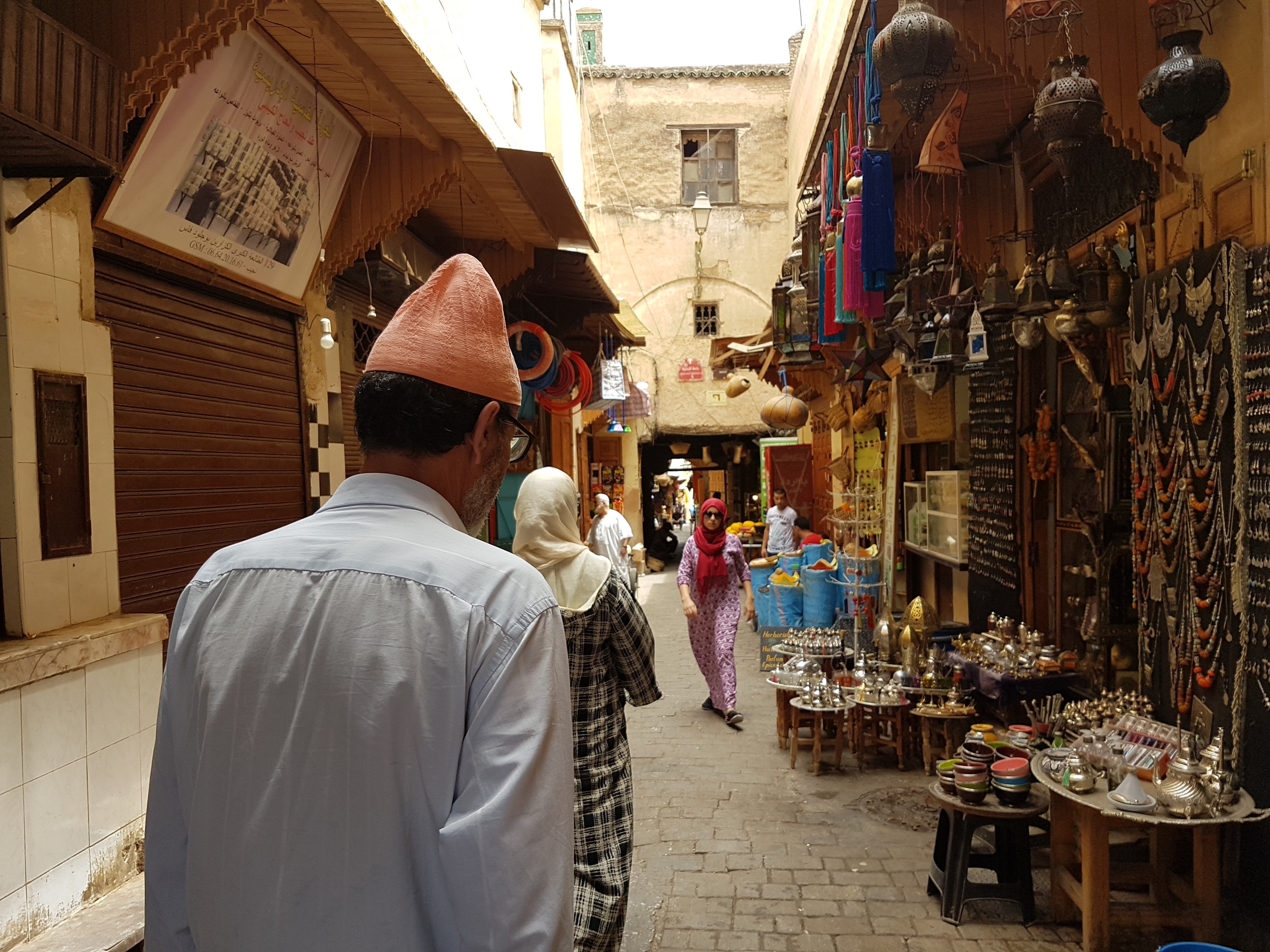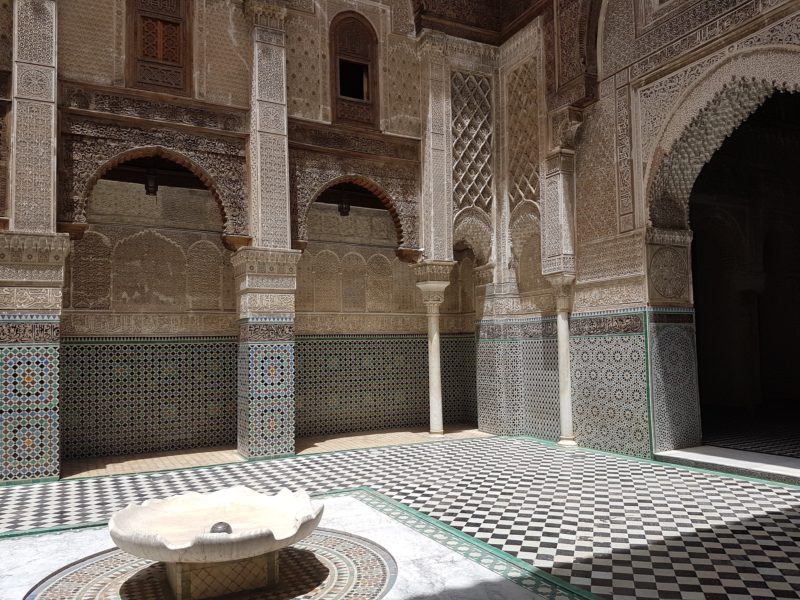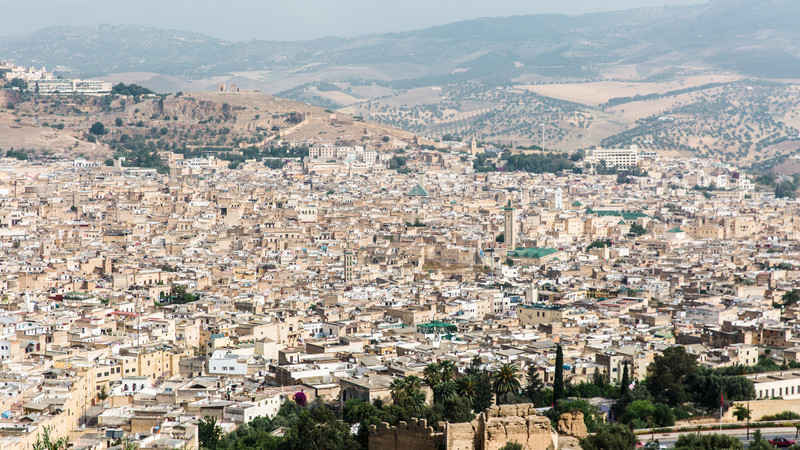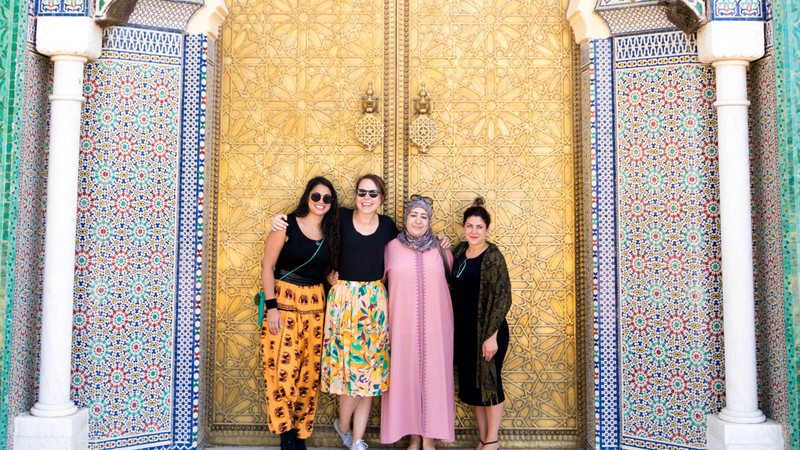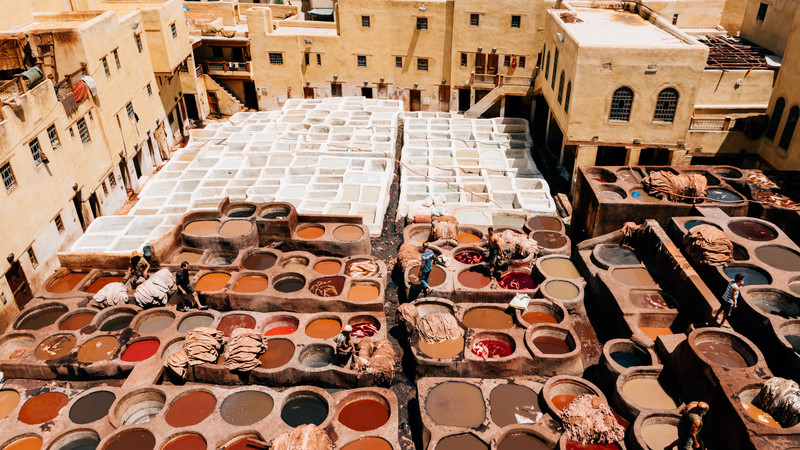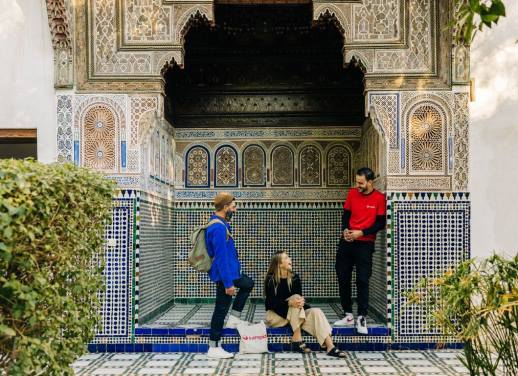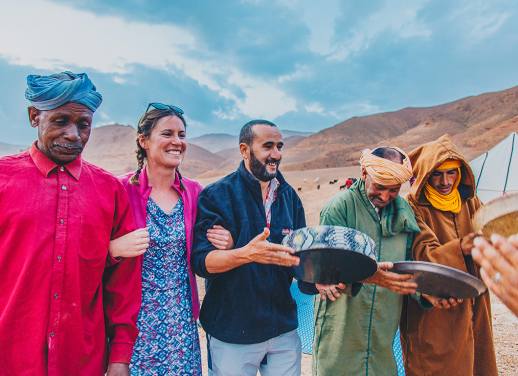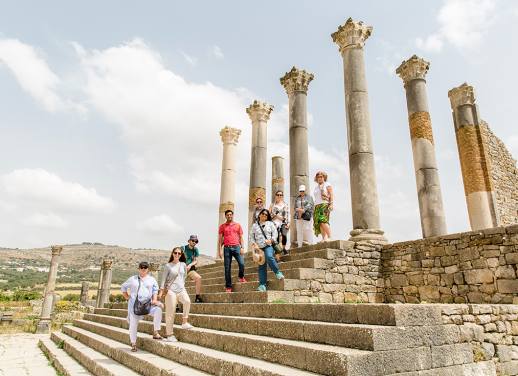I knew little about Fes before visiting.
I had the intention of using the city as a stopover to break up my travel journey as I headed to Morocco‘s south. But upon entering the towering walls of the old medina, I was so amazed by the well-preserved traditions and buildings that I had to stay longer and explore this beauty.
Fes, it seems, is frozen in time. Andalusian and African architecture is coupled with old school handicraft trades. The city has one of the best conserved historic towns of the Arab-Muslim world… and that’s just for starters.
You don’t always have to go off the beaten path to experience Moroccan culture at its barest and truest form. You also don’t have to follow flocks of travelers to Marrakech.
The title of “cultural and spiritual centre” of Morocco wasn’t just slapped on to appease tourists. It truly reflects the traditional lifestyle that persists throughout the city. Here’s how:
A medieval labyrinth
The oldest walled part of the city, Fes El-Bali, is recognized as a UNESCO World Heritage Site. Enter through the archways of the stunning Bab Boujloud (Blue Gate) and you’ll get a sense of what lies ahead in the 19th-century medina.
The medina is one of the world’s largest urban car-free zones. Here, mules, donkeys and pedestrians flow steadily through the streets. So as you wander the streets, learn from my mistake… If you hear porters yelling balak, it’s your cue to stick close to the wall.
Navigating the medina is adventure on its own and is definitely the biggest highlight of the city. Inside the medina, there are two of the most awe-inspiring madrasas (Islamic colleges): Madrasa al-Attarine and Bou Inania Madrasa. Stop at either (or both!) and admire the intricate carvings and beautiful design. The latter is one of the few religious buildings that non-Muslims can enter.
More stunning tile-work is on display at one of my favorite spots, the impressive University of Al Quaraouiyine. Recognized by the Guinness World Records as the oldest existing educational institution in the world, its kaleidoscopic patterns are absolutely mesmerizing!
RELATED READ: 10 EXPERIENCES EVERY TRAVELER SHOULD HAVE IN MOROCCO
The “Athens of Africa”
Far away from the ornate details of the madrasas lie the Merenid tombs. A few giant tombs that sit on the hill above Fes, these sepulchres are quite the mystery. They’re said to contain official documents, but no-one really knows for sure.
But what I can tell you is that they offer a fantastic view of the city just before sundown. I found the stillness above the walls hauntingly beautiful as the call to prayer diffused through the city-wide speakers.
Outside of the old medina, beside the royal palace with its hefty brass doors, is Fes Mellah, the Jewish quarter. The extremely well-preserved walled quarter has a gold souk (market) — the first of its kind in Morocco.
I found it so intriguing to learn what makes the Jewish quarter so distinct. The large windows and open balconies lining the street here are a contrast to typical Moroccan riads, which favor more privacy with their discreet windows and intimate courtyards.
RELATED READ: PHOTOS OF WHAT IT’S LIKE TO HIKE THROUGH MOROCCO WITH A BERBER FAMILY
The rhythm of artisans: Tanneries, coppersmiths & weavers
The charm of the old medina is found in the people who maintain the century-old rhythms of handicraft industries and methods of past generations. In the living museum, you can glimpse weavers puppeteering cactus and silk threads. I loved watching them masterfully create patterns with a large wooden loom operated solely on manpower.
Mules and donkeys shuttle between the tanneries and the leather artisans in the souk, their backs piled high with dried and stretched animal hide. Locals artfully turn the leather into bags with jeweled and copper details. The fresh leather also comes in the form of pointy toe slippers, adorned with traditional embroidery. In the souk, intricate copper lanterns and piles of handwoven carpets are abundant. I easily spent hours reveling at the final products among the endless stalls.
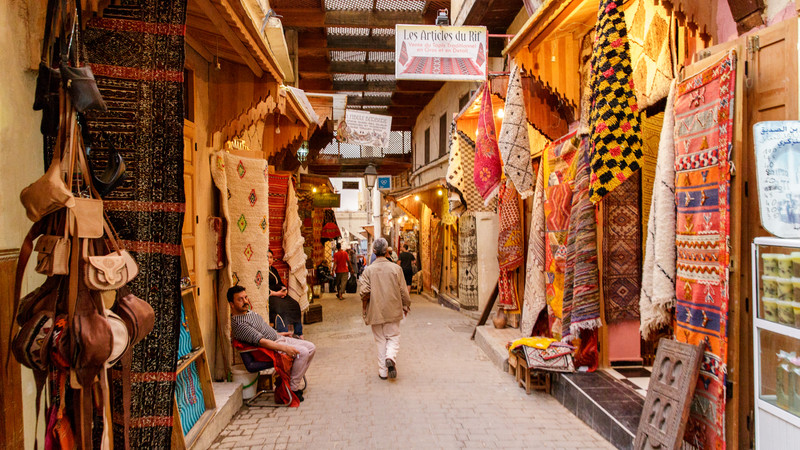 SUBSCRIBE TO INTREPID’S NEWSLETTER FOR TRAVEL TIPS, COMPETITIONS, GIVEAWAYS & MORE
SUBSCRIBE TO INTREPID’S NEWSLETTER FOR TRAVEL TIPS, COMPETITIONS, GIVEAWAYS & MORE
One of the most vital experiences in the medina, and equally as pungent, is the 11th century Chouara Tannery. It’s the city’s largest tannery, and is where cow, sheep, goat and camel hides are brought to be preserved and dyed (then turned into jackets, handbags, wallets and more).
There’s no denying that the smell of the tannery is far from sweet and flowery. Thankfully, the local guides know the best rooftop vantage point to appreciate the labor-intensive process. With the help of fresh mint to put under my nose to mask the smell, I observed the spectacle of skilled workers balancing on the rim of the dye pits.
TAKE IN THE SPLENDOR OF FES ON AN INTREPID SMALL GROUP TOUR
Century old bathing rituals
The dense medina welcomes worlds within worlds with its discreet doors, steep stairways and narrow streets. Traditional hammam bathhouses, scattered around the city, are one such place. The setting for the traditional practice of communal bathing, they boast several rooms varying in temperature.
Full disclosure: although you definitely can wear a bathing suit during the cleansing experience, it’s more common to be in your birthday suit.
During women’s only hours, I joined the female community who use the private space to shed their headscarves and exfoliate their skin. They use a khmiss (a coarse scrubbing glove which work wonders) and locally-sourced savon noir (black soap). This was one of the most powerful cultural experiences I had in Morocco. It was amazing to feel so welcomed in such a personal practice.
RELATED READ: WHAT IT’S LIKE TO TRAVEL IN MOROCCO AS A SOLO FEMALE TRAVELER
Fes is for foodies
There’s more than bath house rituals, however. After-dark activities carry out onto the winding streets and this is a nightlife centering around mint tea, hookah and Moroccan cuisine. The Jemaa el-Fnaa square in Marrakech gets a lot of attention for its foodie scene (and rightfully so), but Fes has its own special offerings.
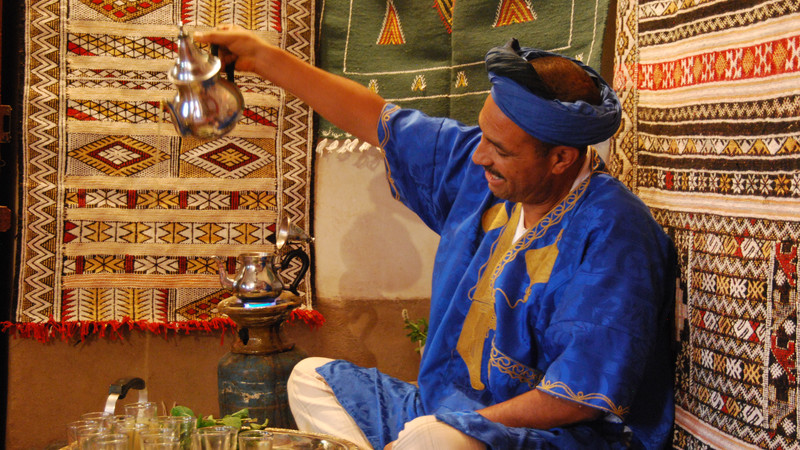
Mint tea being enjoyed by a Fes local
The food scene in Fes is a perfect compliment to its walkability. I’d recommend heading out on a food crawl through the labyrinth of streets. Try brochettes (meat skewers), smoked over a charcoal fire and finish with some sweet pastries. Also, fuel up on freshly squeeze orange juice — it’s magic.
The Ville Nouvelle (French for ‘new city’) is a neighborhood showcasing the city’s modern European influences. Though fusion cuisine has always been intertwined in the flavorful offerings here, local favorites such as pastillas (a sweet and savory meat pie), have been a signature for generations.
Sweet and savory, old and new. That’s Fes in a nutshell. The charm of this city isn’t dissipating and neither is my adoration for it. Visit, and you’ll see why.
Be charmed by Fes on a small group adventure to Morocco with Intrepid.
—
(Image credits from top to bottom: Intrepid Travel x2, Julie Faye Germansky x2, Intrepid Travel x4, Liane O’Keefe)

